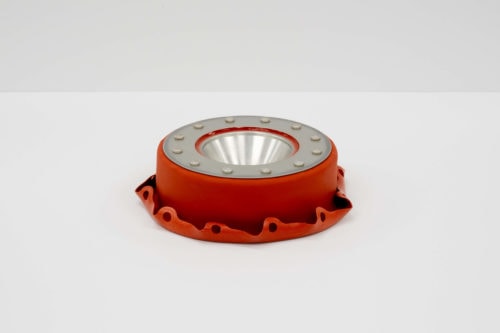Design Tips for Durable Rubber-to-Metal Bonding
Design Tips for Durable Rubber-to-Metal Bonding
When designing a part that incorporates rubber-to-metal bonding, there are several steps you can take to ensure a strong bonded seal.
The primary concern with rubber-to-metal bonding is the design of the rubber itself. Improperly designed rubber components will pull away from the metal part over time. Our goal is to ensure a lasting bond between the two pieces.
Here we’ll discuss the challenges of rubber-to-metal bonding, reveal Micro-Tronics’ in-house bonding process, and outline our design recommendations for components that require bonding.
Challenges of Rubber-to-Metal Bonding
Because rubber and metal don’t expand and contract at the same rate, it’s important to consider thermal cycling when designing a part with rubber-to-metal bonding.
Much like a pothole forms in the street as the seasons transition from hot to cold, rubber and metal components will begin to separate as the individual components respond to temperature changes.
This problem is especially apparent when rubber and metal edges butt against one another. As the materials expand and contract, the rubber begins to split. When an assembly vibrates and moves, any cracks in the part’s rubber will expand, propagating from wherever the initial crack began.
If a part’s bonded rubber cracks and splits, that damage will eventually lead to part failure.
7 Critical Design Tips for Rubber-to-Metal Bonding
Incorporate these tips into your design to ensure a strong, durable bond between rubber and metal components.
1. Avoid right angles
Designing rubber components with fillets or overhangs helps to distribute stress over a broader area, enhancing the bonded seal and lengthening the part’s lifespan.
At Micro-Tronics, we’re partial to curved fillets and prefer to avoid right angles altogether. Curved surfaces are better equipped to handle expansion and contraction.
2. Consider the metal material to be bonded
Remember that it isn’t only the rubber that expands and contracts. Metal undergoes thermal cycling, too!
For example, an aluminum component has much higher thermal expansion and contraction levels than steel. Understanding how your chosen metal responds to temperature will help you determine which design elements to incorporate.
3. Plan for metal preparation
Unlike your cookware at home, which you want to be smooth and stick-free, metal that’s meant to be bonded should have a rough surface so that it can support a durable rubber-to-metal bond. You want to form microscopic peaks and valleys that increase the total bonding surface area.
Micro-Tronics can perform media blasting to modify the bonding surface. Another solution is chemical etching—an especially good choice for high production volumes.
4. Understand the bonding process
Metal components must be clean and rust-free to ensure a strong bonded seal. However, blasting and chemical etching both create exposed metal surfaces. Oxidation will begin within approximately eight hours if the surface has not yet been coated in an adhesive.
To prevent rust, get your parts fabricated and bonded by the same manufacturing partner. Micro-Tronics will machine your metal components and then bond the seals in one seamless workflow, ensuring immaculate materials that are absent of cutting fluids, oils from handling, or minuscule shards leftover from the machining process.
5. Select the correct adhesive
Not all adhesives are created equal. We’ll gladly make the correct adhesive selection for you, but we will need a clear understanding of the part’s end use and environment to choose an adhesive that can tolerate the assembly’s working temperatures. Micro-Tronics will also align those details with your rubber material’s properties since certain rubber/adhesive combinations are incompatible.
6. Account for finishing services
Consider any finishing your part may require:
- Will your part’s metal require a coating, such as anodizing, powder coating, paint,, or plating?
- Should the coating take place pre- or post-bonding? Post-bonding coatings can only be applied to certain rubber materials.
- Will the part require additional finishing on exposed metal edges?
- Can that finishing be applied post-bonding? On parts with extremely tight dimensions, post-bonding grinding may impact the rubber as well.
7. Allow for venting
If your metal component includes blind corners or blind pockets, it may be necessary to add through-holes to your design that allow air to vent from beneath the rubber material’s bonding surface.
Verify Your Design with Micro-Tronics and Ensure Strong Bonded Seals
We encourage you to bring your design to us for review so we can identify any concerns and collaborate on solutions. Our team will ensure that every design detail is accounted for so that we can guarantee high-quality parts with durable rubber-to-metal bonding.
To get started, request a quote today!





